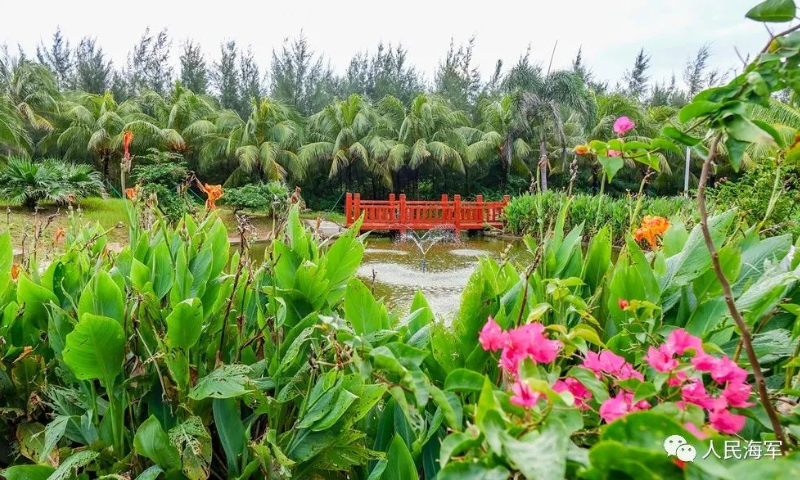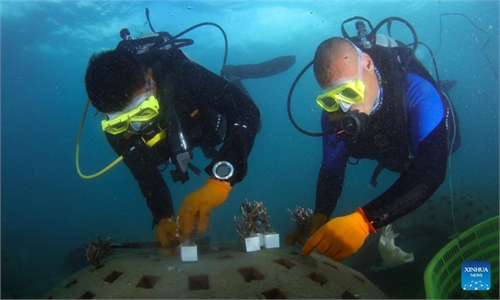Discovery of saline marsh on Yongshu Reef marks China's progress in protecting ecology of Nansha Islands

Plants on Yongshu Reef, Nansha Islands Photo: WeChat account of PLA Navy
The water quality and physiochemical properties collected at Yongshu Reef, Nansha Islands have been found to be similar to those of a natural salt marsh, meaning the Reef has a saline marsh with naturally grown vegetation.
The analysis was conducted by the Ecological Research Center of the South China Botanical Garden under the Chinese Academy of Sciences.
The samples were collected from a 650-meter long 40-meter wide wetland on the Yongshu Reef. Soldiers stationed on the reef and botanists previously found during environmental inspection that vegetation such as pemphis, pursland and beach heliotrope are growing on the wetland.
The botanists then conducted a preliminary analysis of the micro-topography, plant species, soil composition, soil and surface water quality, and collected samples for further inspection.
The saline marsh is of great significance for the ecological maintenance, hydrological regulation and coastal protection of the Nansha Islands and reefs, according to the Ecological Research Center, and the ecological environment of Yongshu Reef has improved remarkably.
The center plans to further study and protect this piece of saline marsh, and use it as a source for sea-floating plants' natural diffusion. It can also be a habitat for birds, continuously improving the ecological environment of the islands and reefs.
It would be hard for vegetation to grow on Yongshu Reef - a high-temperature, high-humidity and high-saline environment - if it were not for the efforts of generations of soldiers stationed on the reef. Soldiers returning from vacation brought back soil and seeds from their hometowns and tried to plant them. Most of them withered but they never gave up.
In order to improve the soil structure of coral sand on the reefs and make it suitable for plants, the soldiers creatively mixed fallen leaves and kitchen waste, and fermented the mixture to make organic fertilizer suitable for the growth of plants. The move dropped the saline level of the coral sand from 0.138 percent to 0.0443 percent, and the survival rate of plants reached 90 percent.
Through continuous efforts, the Nansha Islands are much greener and the number of plant species on the reefs has increased from 20 to more than 120.
The change on the Nansha Islands is part of the PLA Navy's efforts to practice the important vision that "lucid waters and lush mountains are invaluable assets."
Global Times

